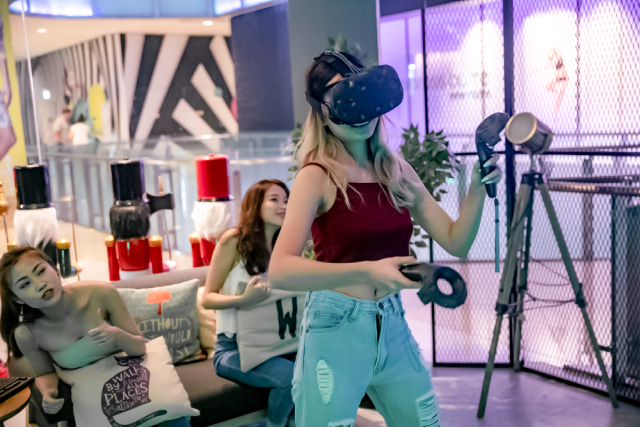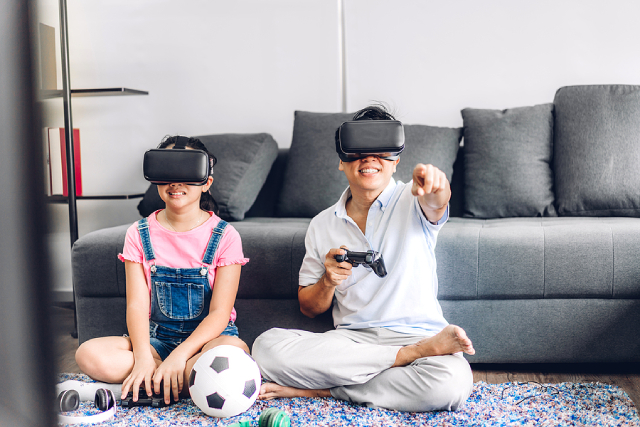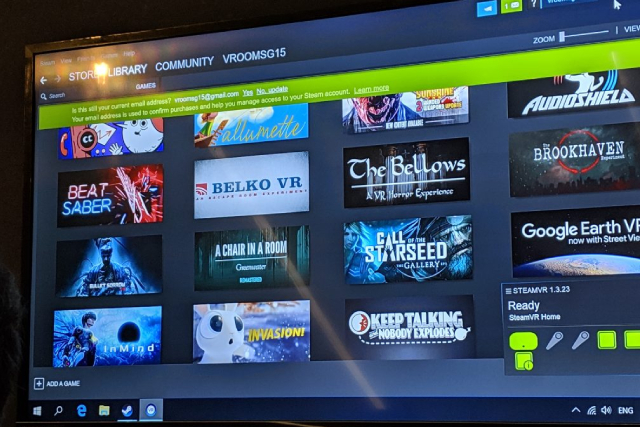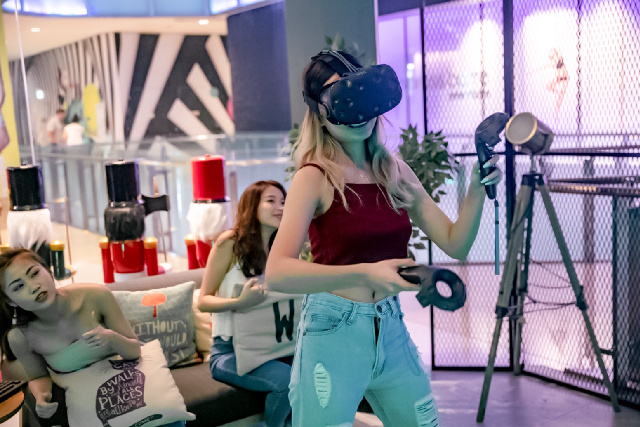The term virtual reality has many connotations, but it essentially means near-total immersion in simulated environments that users can interact with as if they are there.
Although VR technology has been used in all sorts of ways, from movies to flight simulators, its application in games didn’t begin until the 90’s, when it saw a short-lived VR craze. The gaming company Sega tried to create the first commercially available VR headset, but it sadly didn’t get past the prototype stage. Later, Nintendo put out their Virtual Boy device dedicated to home gaming, but due to its price and limited graphics, only a few takers got to try it.
The Virtuality Group is a company that also tried their hand at VR headsets with ‘pods’ (cushioned seats that users could stand or sit on when playing) for use in arcades and also developed games for it. Although its graphics were primtive, Virtuality Group and its games still succeeded at giving gamers their very first, albeit brief, taste of virtual reality gaming before arcades were overthrown by home gaming.
It was only 15 years later that virtual reality tech finally became a commercially viable product in the form of the Oculus Rift prototype. It was designed to potentially be the first-ever consumer-grade VR headset. The Rift’s success primarily stemmed from its intuitive design and, more importantly, because it was powerful enough to support the high graphics requirements of VR.
In 2015, two new VR headsets were released: Samsung Gear VR and Google Cardboard. These devices interface with smartphones, which virtually everyone already has, to create amazing VR experiences. While these were a new and affordable way to experience VR, they were effectively discontinued in 2021.
By 2016, the first wave of modern consumer-grade VR headsets became available to the general public. These included the Oculus Rift, HTC Vive, and PlayStation VR. They interfaced with PCs (or a PS4 console), allowing for a smooth gaming experience.
Jumping on the VR trend, Virtuix launched Omni in 2017, which was an omnidirectional treadmill designed for VR games and other applications. The Omni’ treadmill’ was a breakthrough VR device as it made real-life motion into virtual reality. This product was the very first of its kind, given that movement in VR games at this time did not allow for much physical to in-game movement. For serious VR gamers that wanted to enhance their experience, the Omni was naturally a must-have — provided they could afford the price tag.
As of today, gamers now have an extensive library of VR games to choose from and immerse themselves in, from multiple AAA titles to various indie games. One such title that has become a watershed in VR gaming is Half-Life: Alyx (2020). This title, which takes place in the ever-popular world of Half-Life, is now widely considered a killer VR app for many reasons. It explored novel game mechanics only possible in VR, took player interaction with virtual reality to new heights, and it also caused a surge in VR headset sales. This last reason led many to speculate that VR games may have finally emerged from their niche.
With Half-Life: Alyx showing how there’s so much more potential in virtual reality, the evolution of VR gaming will undoubtedly continue at a quick pace. Game worlds will become more interactive, immersive, and fun, so much so that ‘getting lost in the virtual world’ may no longer be just an empty marketing promise. With new games, standalone devices, such as the PlayStation VR2, and new developments on the horizon, the future of VR gaming and VR technology is looking extremely promising.
If you’re ready to embark on your journey in VR gaming, come on down to V-Room where the best VR gaming experience possible awaits. Experience countless adventures in the many spell-binding and futuristic worlds behind our large collection of VR games, from highly acclaimed titles like Half-Life: Alyx, Beat Saber, Arizona Sunshine, and more! For details about reservations and bookings, don’t hesitate to contact us today!












